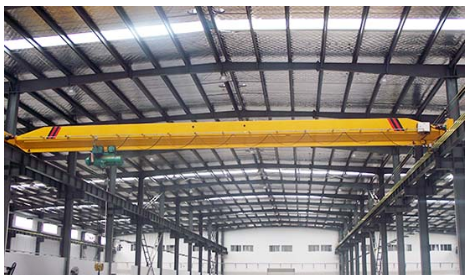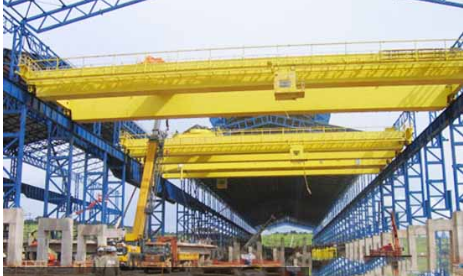Overhead cranes can be incredibly valuable pieces of equipment to have on hand for material handling. However, they can also be dangerous when used improperly. To avoid any accidents, it is a good idea to run through a safety checklist before using a crane. That way, the operator is less likely to overlook any essential safety issues, minimizing the likelihood of anything going wrong. Here are some of the items that you should consider adding to a 40-ton overhead crane safety checklist for your facility:
1. Is the person reading the checklist qualified to operate the crane? Only people who have undergone training should use the crane. Adding this item to the checklist can help ensure that unauthorized workers don’t operate the crane.

2. Does the person operating the crane know where all of the essential safety shut off devices are? This includes knowing the location of the disconnect switch and any other built-in safety features.
3. Is the crane in good condition? Before the crane is even turned on, the operator should inspect it for any potential issues. By making sure that everything is functioning the way that it should before operating the crane, there are fewer chances of anything going wrong.
4. What is the load limit for the crane? It is absolutely essential that the crane is not overloaded. Because of that, everyone who uses it needs to know the maximum capacity that it is capable of carrying. They also need to verify that the total weight of all of the objects below the hook including the load is well under the upper weight limit of the crane.
5. Is the load properly secured? Loose or improperly secured loads are one of the primary causes of accidents or injuries with 40 tons overhead cranes. The crane operator should double or triple check the load to make sure that it is totally secure and evenly balanced.

6. Is the area underneath the crane clear? There should be absolutely no people in the immediate vicinity of the crane. This is especially important in the direct path underneath the crane. No one should ever be standing directly under the crane when it is in operation. This is one of the most important safety checks for the operator to make.
7. Is the area where the load will be set down properly prepared? Part of operating the crane smoothly and safely involves making sure that you have a secure place to set the load down once it has been moved. Whether you are moving the load across the factory or loading it onto a waiting truck, train, or boat, make sure that the drop-off area is fully prepared before raising the load into the air. You can learn more on http://topoverheadcranemanufacturer.com/.
When developing a safety checklist for a 40-ton overhead crane, be sure to include all of these items. Additionally, think through whether or not there are any additional factors that you need to add to your list based on your location and the type of crane that you have. Want this crane? Get on http://topoverheadcranemanufacturer.com/40-tons-overhead-crane/.